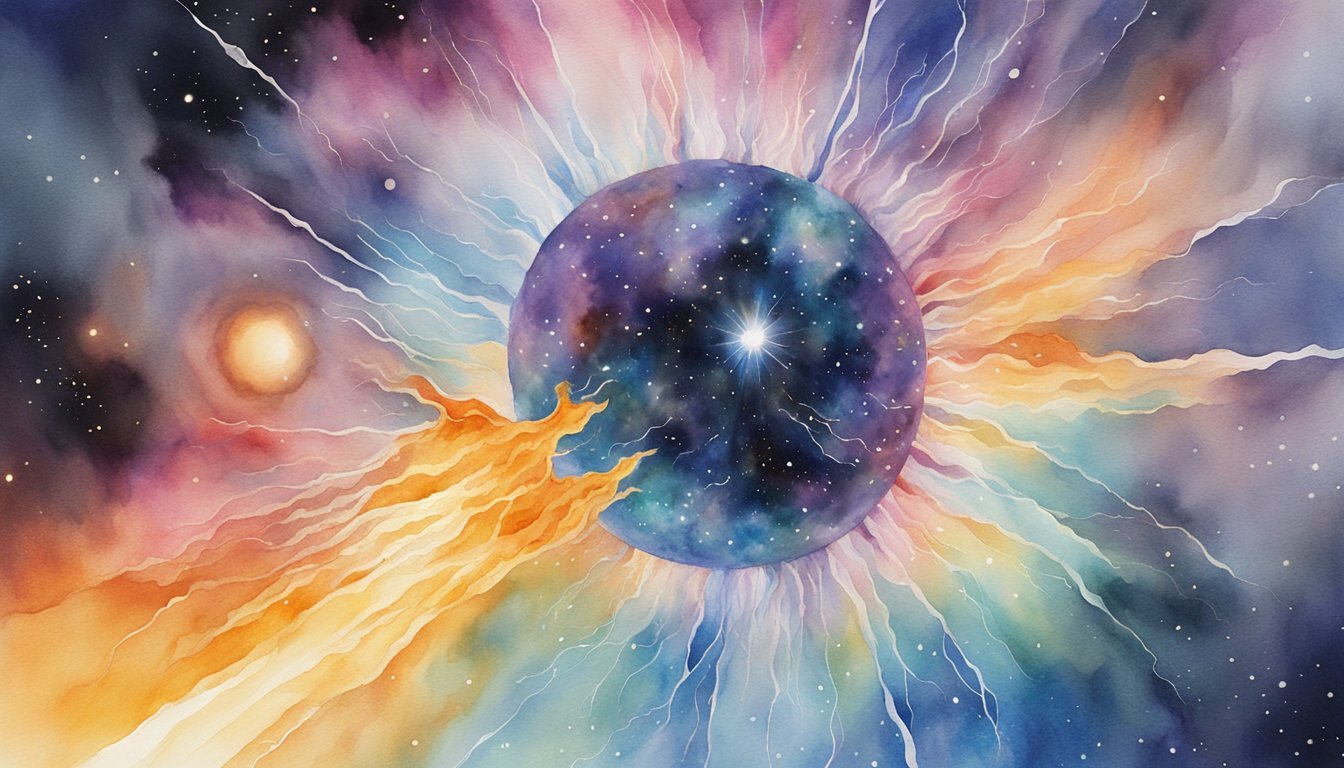The Life and Death of Stars
In the grand tapestry of the cosmos, the birth, life, and death of stars are pivotal to the fabric of the universe. These processes dictate the formation of elements and the evolution of galaxies.
Stellar Evolution Basics
Stars begin their cosmic journey from clouds of dust and gas. Through gravitational collapse, these clouds form dense hot cores where hydrogen fusion ignites, marking the birth of a new star. During most of a star’s life, it burns hydrogen in its core, producing helium and significant amounts of energy. This delicate balance between the inward pull of gravity and the outward pressure from nuclear fusion keeps the star stable.
The Transformation into a Red Giant
As a star exhausts its hydrogen fuel, it undergoes drastic changes. The core contracts and heats up, pushing the outer layers outward, transforming the star into a red giant star. This phase signifies the twilight of a star’s active life, where it starts to burn helium and heavier elements like carbon.
Nuclear Fusion and Elemental Formation
The intense pressure and heat in the cores of stars foster the process of nuclear fusion. This is where different atoms collide and fuse to form new elements. The production of elements in a star’s core releases energy in the form of electromagnetic radiation, contributing to the star’s luminosity.
Star Types and Their Diverse Endings
The death of a star is as diverse as the various types of stars themselves. Smaller stars may gently shed their outer layers into space, leaving behind a dense core known as a white dwarf. However, massive stars experience a more dramatic fate, exploding as supernovae and leaving behind either a neutron star or black hole. These celestial finales disperse newly formed elements into the surrounding galaxy, supplying the building blocks for new star formations and contributing to the ongoing life cycles within the universe.
Discover more about the intricate lives of these celestial bodies at BBC’s exposition on the star’s lifecycle, detailed insights into elemental formation at Astronomy.com, NASA’s guide to the The Lives, Times, and Deaths of Stars, a comprehensive outline on how stars meet their end at Space.com, and an explanation about the process at HowStuffWorks.
The Cosmic Afterlife of a Star

The death of a star marks the beginning of a complex process of cosmic transformation, from spectacular supernovas to the mysterious end states of neutron stars and black holes.
Supernovas and Stellar Corpses
When a star exhausts its nuclear fuel, the balance between gravity and the pressure from nuclear reactions is broken, leading to a catastrophic collapse. For massive stars, this collapse triggers a supernova, an explosion so bright that it can outshine entire galaxies momentarily. The core’s remains become a ‘stellar corpse’, either a white dwarf or, depending on the remaining mass, a seed for more exotic remnants.
Neutron Stars and Black Holes
If a supernova’s core is beyond a certain mass, protons and electrons may combine to form neutrons, and a neutron star is born. Above a higher mass threshold, the core collapses into a singularity, creating a black hole, an object with gravity so strong that not even light can escape from it. Neutron stars and black holes bear witness to the extreme states of matter under incredible pressure and gravity.
The Circle of Cosmic Recycling
The materials expelled by a dying star, such as gas, dust, and new elements like oxygen and magnesium, are returned to the cosmic environment. This expanding cloud can form a vibrant planetary nebula, visible as a colorful shell around the remnants of the original star. Gradually, this ejected material can become part of new stars and planets, continuing the cosmic cycle of birth and death.
Observing Stellar Remnants from Earth
Astronomers use telescopes to observe the dramatic end states of stars from Earth. Instruments like the Hubble Space Telescope have captured images of supernovas, neutron stars, and black hole signatures. These observations help scientists understand the physical processes of dying stars and contribute to our comprehension of the universe.
Through the intricate stages of a star’s afterlife, the cosmos undergoes an endless series of transitions, beautifully illustrating the universal processes of change and renewal.

